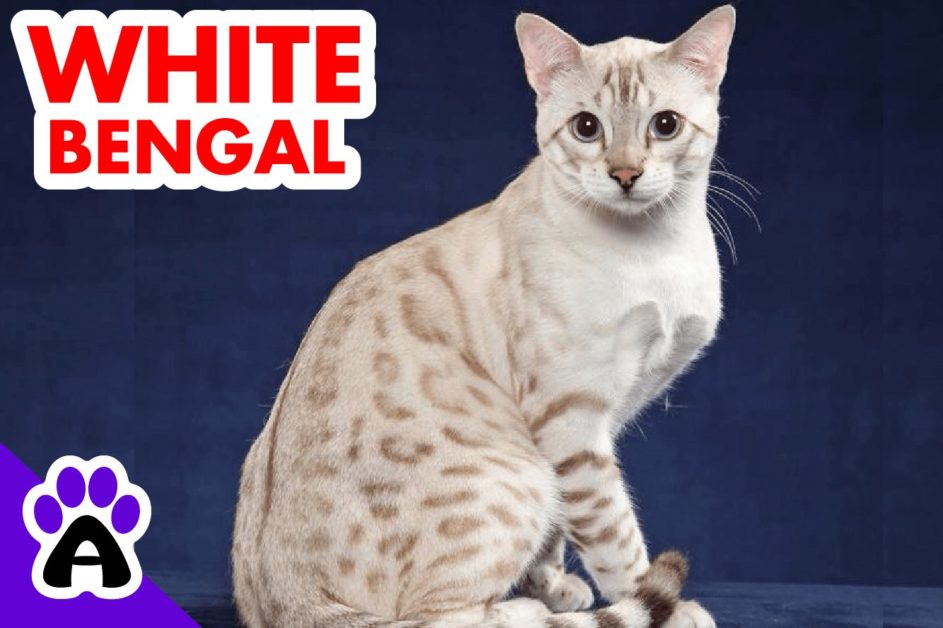When choosing a pet for yourself, you should pay attention to such adorable creatures as snow Bengal cats, which in their appearance resemble leopards. They are quite friendly and playful creatures that will not let their owner get bored. In addition, Bengal cats are considered excellent hunters and strategists.
Snow Bengals are gaining more and more popularity all over the world. Which is not surprising! Nevertheless, only a few work with this delightful, but difficult-to-breed color.

What is a White Bengal Cat?
The Snow Bengal cat is one of the best representatives of its breed. People, call this cat a “snow leopard” because of the similarity of color with its natural counterpart – the irbis.
The Snow Bengal has a snow-white coat with clear marks and spots. The eyes are the same blue as those of Siamese cats. The body is rather muscular, with a broad back and a very long neck. The head is wedge-shaped and the short ears are set high. They are rounded.
The fur of these beauties is short and very thin, it fits snugly to the body. It feels a bit like satin to the touch. In kittens, it is much longer, in addition, some of them are born albinos, but spots appear on the body over time.
Snow Bengal Color Variations & Genetics
1) Seal Lynx Point. Lynx genotype – cs cs
2) Seal Sepia. Sepia genotype – cb cb.
3) Seal Mink. Mink’s genotype is cb cs.
Let’s take a closer look at the variety of snow colors in the Bengal breed: All three types of color are quite similar in phenotype (i.e. externally) and different in genotype (i.e. the genes responsible for the formation of a particular color are different)
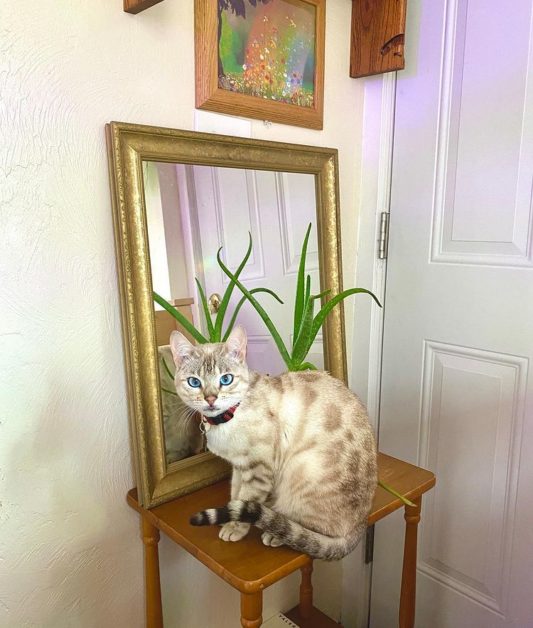
1) Lynx Snow Bengal (Seal lynx point) BEN n33 – True snow color.
The result of using Siamese cats in the Bengal breed. White background color and beige markings – points. A feature of this color is blue eyes; when photographing with a flash, the pupils are painted in ruby color.
Lynx is a patterned color point. But unlike all other breeds, in Bengals, the pattern on the body is not only noticeable, but also should be as clear as possible.
The background of the coat is very light and the muzzle, paws and tail are colored in a darker tone. The background ranges from ivory to cream.
Pattern lines from light brown to light or dark chestnut. The drawing is contrasting. There should be little difference between the tone of the pattern and the markings. The difference in the color of the points and the hull is pronounced.
Lynx tabby kittens are born almost white. Drawing gradually develops as they grow older. At 2 – 2.5 months, the pattern of spots can be very weak. For blue-eyed snow cats, the pattern can take up to a year to develop.
The Snow Lynx’s genotype is cs cs. Lynx can be obtained from two Lynx carriers, from 2 Minks, and also from Mink and a Lynx carrier.
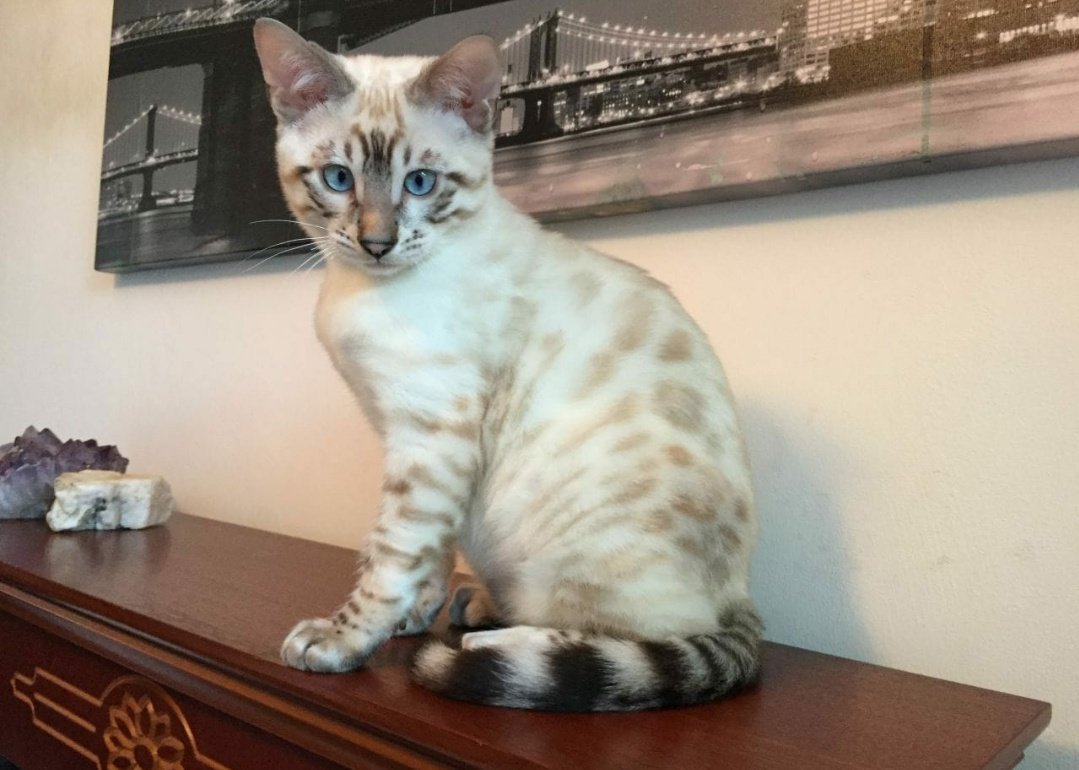
2) Snow Sepia Bengal (Seal Sepia spotted) BEN n31, or Burmese color.
It is the result of crossing Burmese cats with a Bengal cat. In the late 1980s, two breeders Jean Johnsnov (Gogees Kennel) and Bob Danton (Nola Kennel) began breeding the Snow Bengal cat. The sepia and mink foundation is believed to be the mink snow Bengal cat Nola Kotton Pickin of Gogees. Sepia Bengal cats have pronounced cinnamon rosette spots on a cream background.
Sepia is the darkest snow color. This color is obtained in the presence of Burmese genes from the group of acromelanistic colors. In solid Burmese, there is a noticeable difference in color – between the so-called points and the lightened body.
In Bengals, the difference between the color of the pattern on the body and the color of the points should be minimal or absent. The background of the coat can be ivory, light buff, or cream.
The lines of the drawing are in tones corresponding to the color of the points in the Burmese sable color (this is what the Americans call sepia). The paw pads, rims of the eyes, the lobes of the nose, lips, as well as the hair on the tip of the tail should be dark brown. On the paw pads, a pinkish skin tone may appear through the pigment.
Eye color – gold (Yellow), green and golden green.
Sepia genotype – cb cb. Sepia can be obtained from 2 minks, from a mink and a sepia bearer, and from 2 sepia bearers.
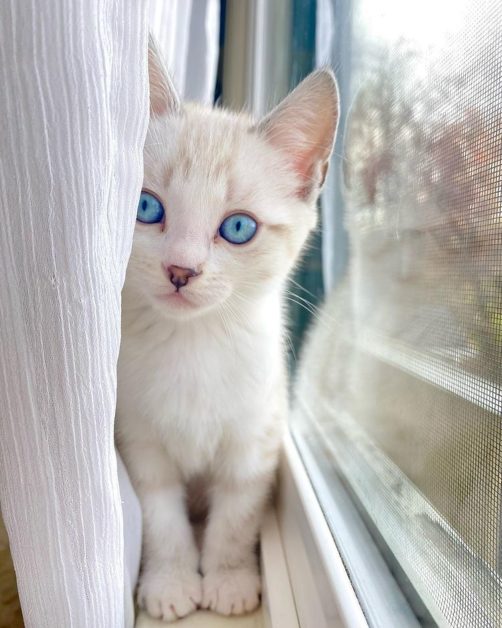
3) Mink Snow Bengal (Seal Mink Tabby) BEN n32
This is a combination of Siamese (seal lynx point) and Burmese (seal sepia) colors. Mink Bengal kitten is born with a visible pattern, in contrast to the completely white Lynx Bengal kitten and from the brightly colored sepia kitten. That is, in terms of color intensity, it occupies an average position between the Siamese and
The Tonkin color is obtained in the presence of Burmese and Siamese genes and has an intermediate character between them. Genetically, the black Tonkin color is also called “mink”. At the same time, the contrast between the lightened body and the points is stronger in Tonkinese than in Burmese. However, in Bengals, it is desirable to have no or minimal difference between the color of the pattern on the body and the points.
The background of the Minks’ coat ranges from cream to golden sable, the pattern is brown, light brown, dark orange, contrasting. The difference in the color of the points and the hull is insignificant. Most often they are ivory with soft gold, gray or brown spots. In general, the color is very similar to the previous one, the same background of the coat, the color of the paw pads, the tip of the tail, etc. Pattern lines in tones correspond to the Tonkinese’s markings in mink.
Eye color – sea green, green, or golden green
Mink’s genotype is cb cs. Based on the genotype, Mink carries both Lynx and Sepia, so it can be obtained in any combination.
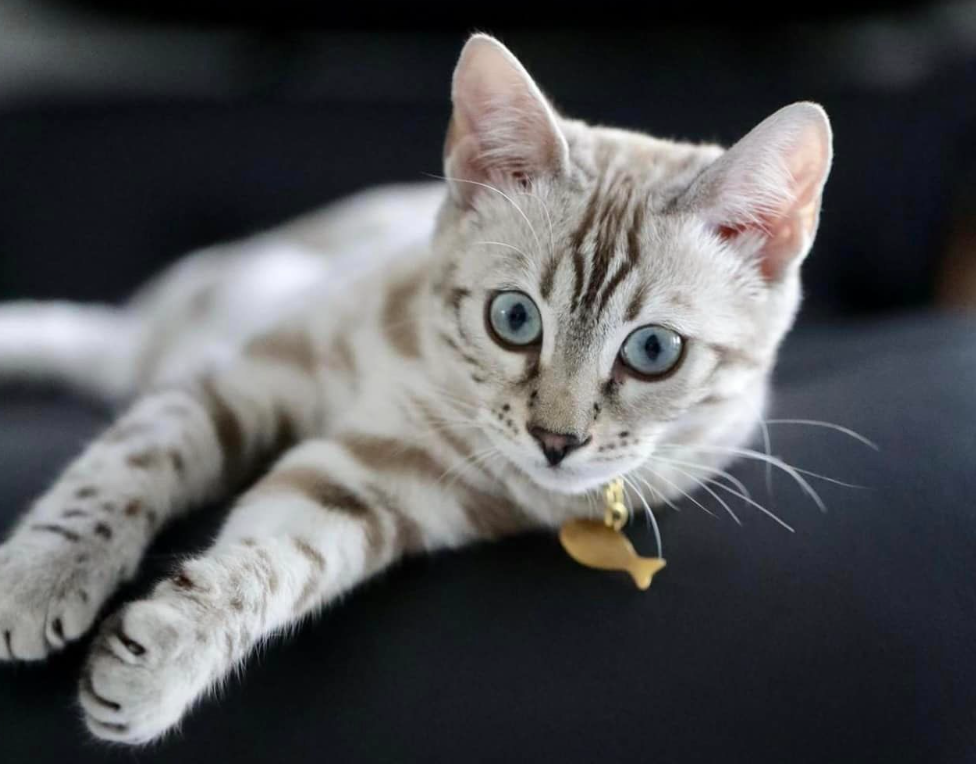
What is the average Size & Weight of a White Bengal Cat?
White Bengal Size
- Female: Approximately 13 Inches
- Male: Approx 13 Inches
The Bengal male reaches adult size by 24 months of age; the female, on the other hand, does it earlier, at 12.
White Bengal weight
- Cat: Between 10 and 15 Pounds
- Cat: Between 12 and 17 Pounds
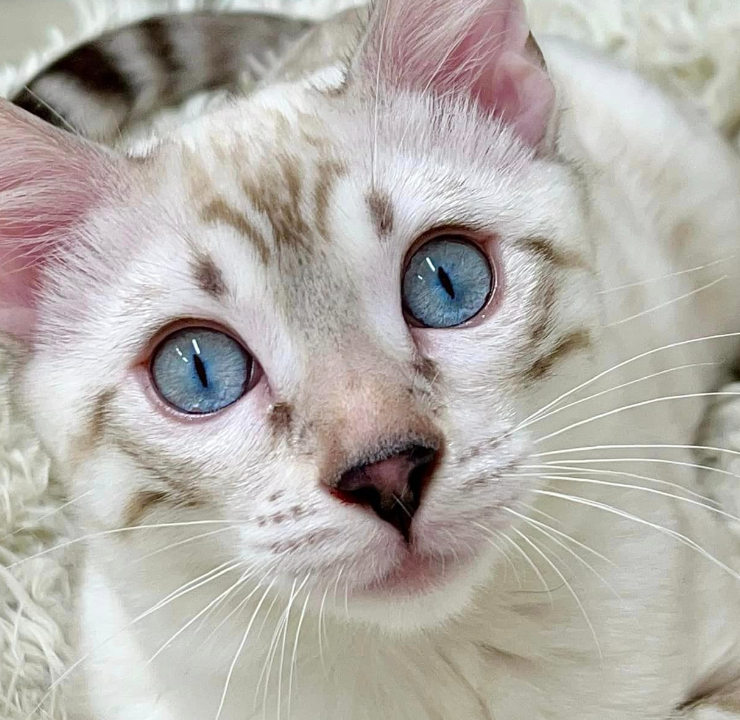
White Bengal Temperament and Personality Traits | Is This Cat Right For Your Family?
White Bengals combine the physical characteristics of a snow leopard with the gentle nature of a domestic cat.
On the one hand, White Bengals are very independent and show with all their appearance that they are predators, strong and dexterous. They are excellent hunters, and their instincts greatly influence their behavior. Therefore, if there are smaller animals in the house, the Bengal can mistake them as prey.
On the other hand, it is difficult to find a more affectionate and outgoing breed. Constant contact with the owner of these cats is very important: with a lack of attention, they run wild and turn into little leopards. But, socializing your kitten from kittenhood will turn your Bengal into a faithful, loyal and affectionate friend.
Such character traits make the Bengal an almost ideal cat for families with small children.
Bengals have a hard time being separated from their owners. Therefore, if the owner has a need to leave the animal with someone, it is better if they are people who are familiar and close to the family. Otherwise, the cat may refuse to eat and become depressed.
White Bengal Lifespan & Health: How Long Do White Bengal Live?
The life expectancy of the White Bengal
The Bengal can live 10 to 16 years.
Resistant / Robust
Its thick coat makes it a cold-resistant cat, although it should not be forgotten that its hair is short and its undercoat is moderate.
Tendency to gain weight
Given the nutritional needs of this cat, it can easily gain weight if its food rations are not adequate. It is always advisable to follow the advice of your veterinarian.
Common diseases
- Pyruvate kinase deficiency, which causes anemia.
- Hypertrophic cardiomyopathy, a disease that causes an enlargement of the heart muscle. This pathology causes heart failure that can lead to arrhythmias or even lung edema or thrombosis of an artery. The short-haired American is more prone to it than his long-haired cousin.
- Progressive retinal atrophy, which can cause total blindness.
Certain specimens can suffer from the same diseases as other domestic cats, such as ailments that affect the mouth and teeth (tartar and gingivitis, for example).
Reproduction
No cross with this breed is authorized.
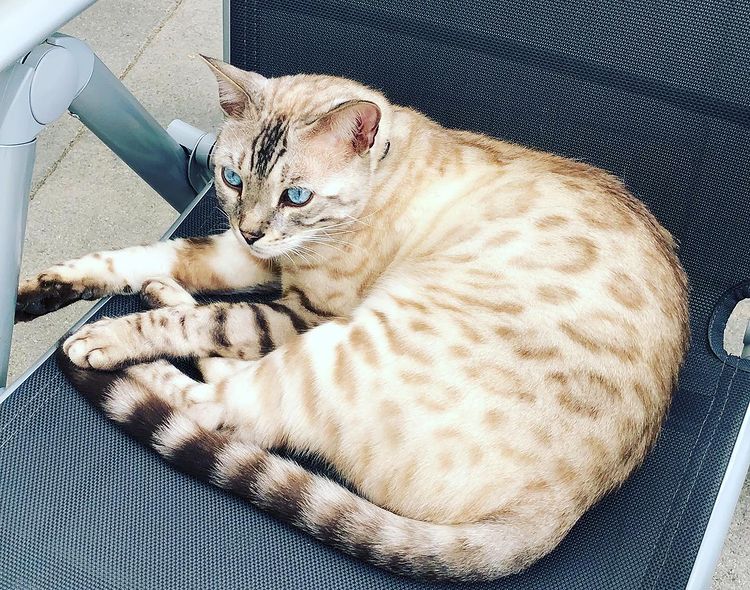
Do Bengal cats need special care? | White Bengal Grooming & Maintenance
Unlike many other cat breeds, White Bengals are very fond of water and love to swim. Therefore, if you leave a filling bathtub, basin, or any other container of water unattended, keep in mind that your cat can happily splash in it.
Bengals have a silky, soft-touch coat. In the sun, it shimmers with golden hues. Many people say that these cats are very pleasant to pet. It does not need any special care or frequent combing.
In general, cleanliness is a characteristic feature of this breed. These cats quickly and easily get used to the litter box and do not tolerate dirt, so the owner should regularly clean the litter box: at the slightest hint of an unpleasant odor, the cat may refuse to go into it.
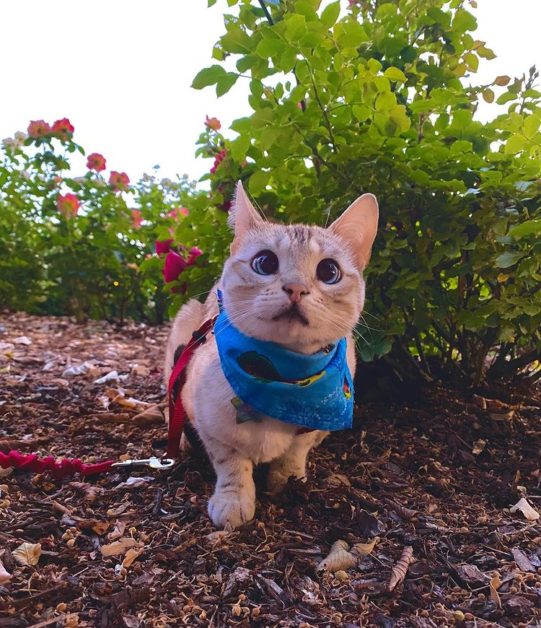
How Much is White Bengal Cat?
A White Bengal Kitten has an average tag price of $3000-$4800. Some Breeders could even offer White Bengal Kittens for $5000 or even higher.
The price would depend on many factors, such as the kitten’s lineage, parents, health, and the breeder’s reputation.
Aside from the kitten’s price, it would be best to consider the expenses that would come with it. For instance, you may want to get the essential things for your kittens like grooming tools, food, and shelter.
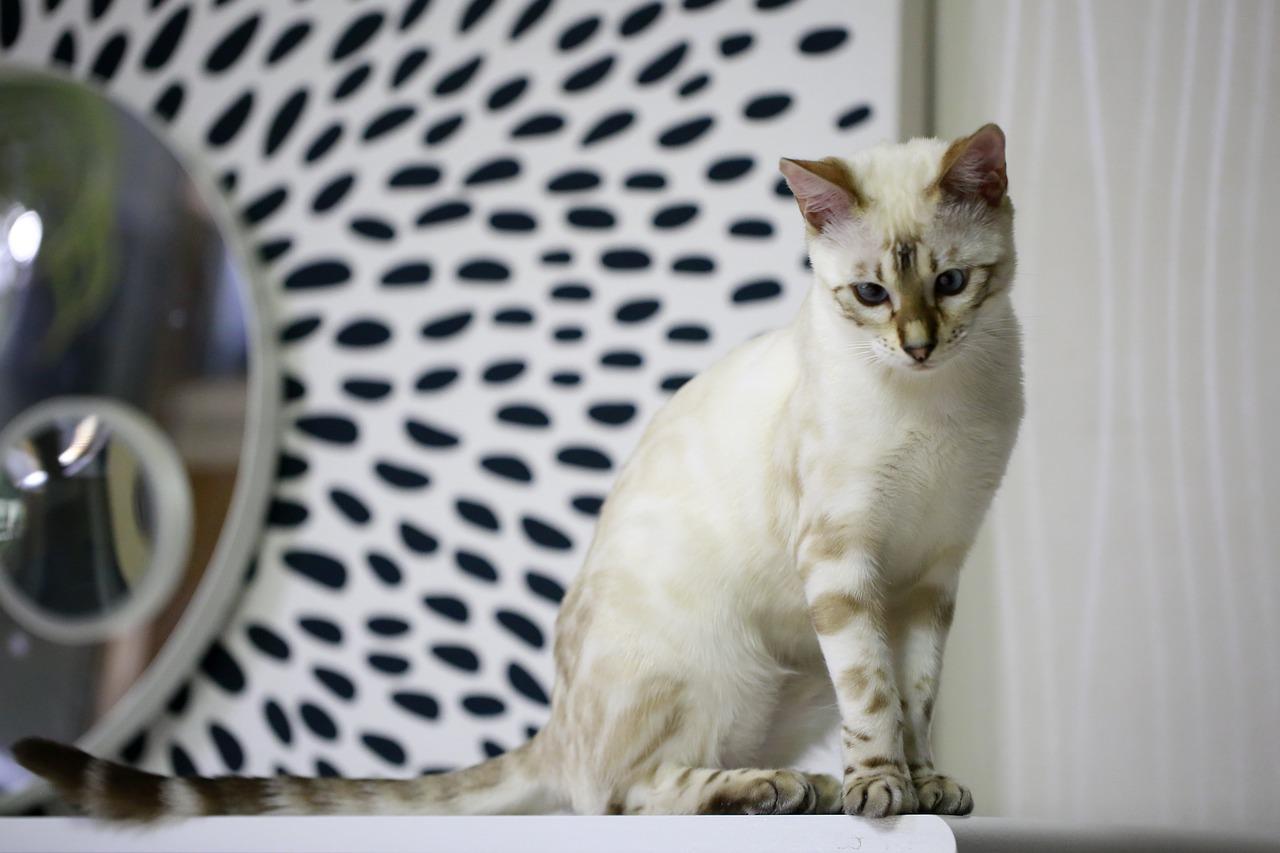
What is a Good Name For White Bengal Cats?
If you’re looking for names for your new Snow Bengal cat, this roundup is a great place to start.
- Egret
- Marble
- Blanche
- Dolly
- Olaf
- Yang
- Fondant
- Glacier
- Alaska
- Snowflake
- Blizzard
- Snow
- Frosty
- Snowflake
- Snowball
- Icy
- Mimi
- Bella
- Muffin
- Prince
- Princess
- Duchess
- Duke
- Angel
- Angelica
- Gabby

Where Can You Find a Snow Bengal Cat?
There are some great and Top Bengal Cat Breeders In the united states that might be able to help.
Frequently Asked Questions
Are Bengal Cats Aggressive?
They are not aggressive at all Although the wild Asian Leopard Cat has been used in the origin of the breed, the generations we handle are far from this origin so the character is totally domestic. They are affectionate, sociable, curious, and playful.
How Large Do Bengal Cats Get?
Bengal cats are quite large, individual specimens weigh 20-21.5 pounds, but on average, their weight is about 15 pounds. females are smaller and sleeker.

